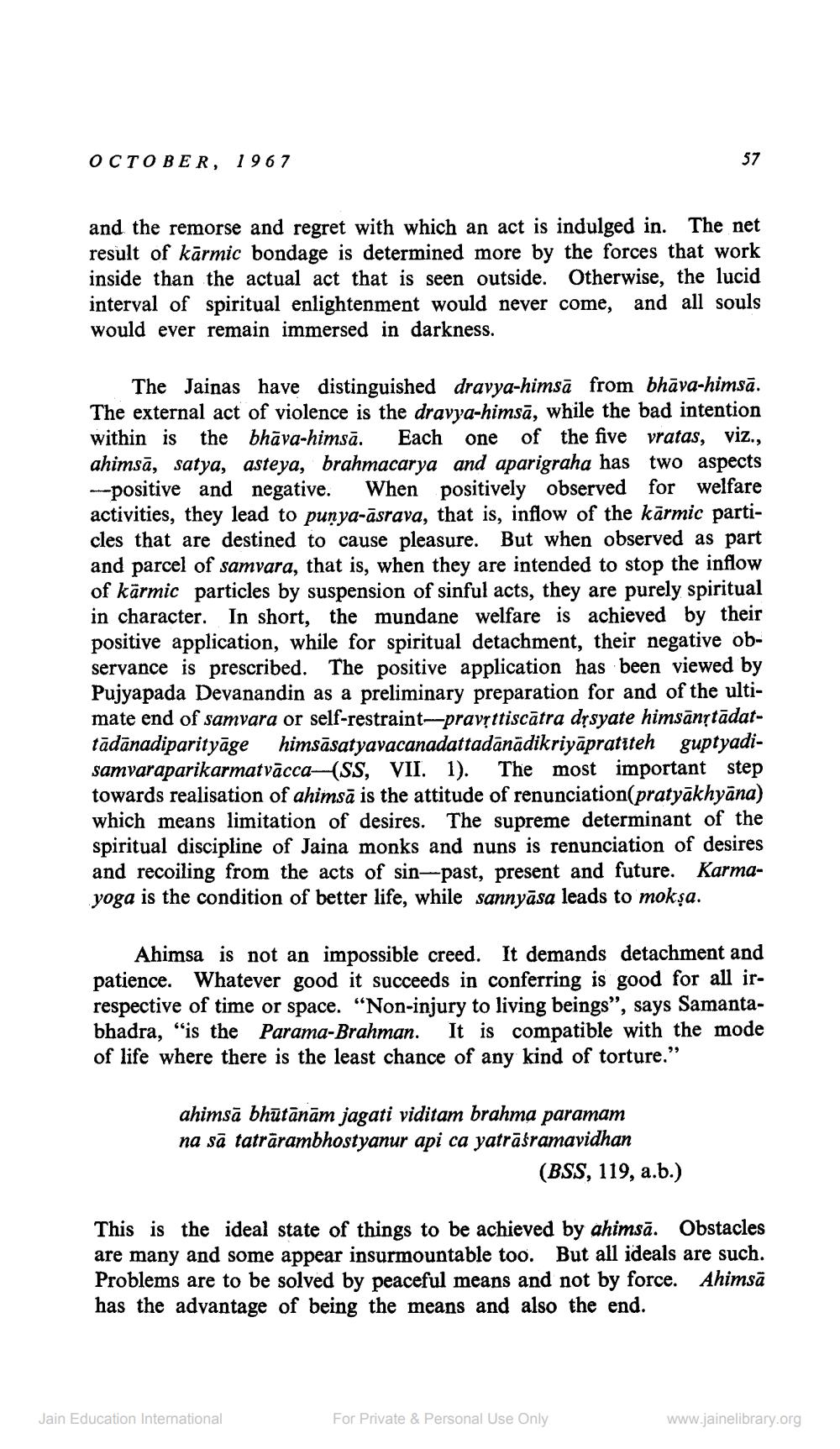________________
OCTOBER, 1967
and the remorse and regret with which an act is indulged in. The net result of karmic bondage is determined more by the forces that work inside than the actual act that is seen outside. Otherwise, the lucid interval of spiritual enlightenment would never come, and all souls would ever remain immersed in darkness.
The Jainas have distinguished dravya-himsa from bhāva-himsā. The external act of violence is the dravya-himsā, while the bad intention within is the bhāva-himsā. Each one of the five vratas, viz., ahimsā, satya, asteya, brahmacarya and aparigraha has two aspects --positive and negative. When positively observed for welfare activities, they lead to punya-asrava, that is, inflow of the karmic particles that are destined to cause pleasure. But when observed as part and parcel of samvara, that is, when they are intended to stop the inflow of karmic particles by suspension of sinful acts, they are purely spiritual in character. In short, the mundane welfare is achieved by their positive application, while for spiritual detachment, their negative observance is prescribed. The positive application has been viewed by Pujyapada Devanandin as a preliminary preparation for and of the ultimate end of samvara or self-restraint-pravṛttiscātra dṛsyate himsānṛtādattādānadiparityage himsāsatyavacanadattadānādikriyapratiteh guptyadisamvaraparikarmatvacca-(SS, VII. 1). The most important step towards realisation of ahimsa is the attitude of renunciation(pratyākhyāna) which means limitation of desires. The supreme determinant of the spiritual discipline of Jaina monks and nuns is renunciation of desires and recoiling from the acts of sin-past, present and future. Karmayoga is the condition of better life, while sannyāsa leads to moksa.
57
Ahimsa is not an impossible creed. It demands detachment and patience. Whatever good it succeeds in conferring is good for all irrespective of time or space. "Non-injury to living beings", says Samantabhadra, "is the Parama-Brahman. It is compatible with the mode of life where there is the least chance of any kind of torture."
ahimsa bhūtānām jagati viditam brahma paramam na să taträrambhostyanur api ca yatrāśramavidhan (BSS, 119, a.b.)
This is the ideal state of things to be achieved by ahimsa. Obstacles are many and some appear insurmountable too. But all ideals are such. Problems are to be solved by peaceful means and not by force. Ahimsa has the advantage of being the means and also the end.
Jain Education International
For Private & Personal Use Only
www.jainelibrary.org




